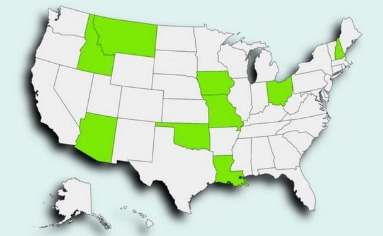Finally, some good news. In nine states and counting, residents will owe less on their next state income tax bill as local officials seek to stimulate the economic recovery by lowering taxes.
Arizona is the latest state to slash income taxes, Fox Business reports, with Governor Doug Ducey signing into law last week a “flat tax” reform that will lower the average Arizonan’s tax bill by $340. According to the Tax Foundation, the other states to lower income taxes include Ohio, Idaho, Oklahoma, Iowa, Louisiana, Missouri, Montana, and New Hampshire. Others such as North Carolina and Wisconsin are currently considering doing the same.
“Many states that are in a strong fiscal position despite the pandemic view tax reform as an opportunity to make a down payment on continued long-term economic growth and to make a name for themselves as a taxpayer-friendly state, especially given the increased remote work flexibility many employers are offering,” Tax Foundation senior policy analyst Katherine Loughead said.
Will these tax-cut-based attempts at “stimulus” be successful? To answer this question, it’s worth revisiting three reasons why state-level income tax cuts fuel economic growth.
1. Change Incentives, Grow the Pie
If you think of the economy as a pie, government programs just take slices from one person and give them to another. So, government “stimulus” programs rarely actually grow the economy overall, because the money spent stimulating one part of the economy must ultimately be taken away via taxation (direct or indirect) from another part of the economy. This typically results in a politically determined redistribution of resources, rather than a larger economy on net.
However, cutting taxes can actually grow the pie overall. Why?
Well, economics teaches us that people make decisions “on the margin.” Basically, they look at the next apple purchased or hour worked and do a cost-benefit analysis, only going through with the transaction if the benefits exceed the costs. Lower income taxes change the decision “on the margin” about working. Tax cuts increase the benefits of working additional hours—while the costs remain the same—incentivizing people to do more work.
So, the economy can produce more overall than it did before.
2. Distribute Resources More Effectively
Another upside of tax cuts is that they free up cash for individuals to spend or invest on their own. The “downside” of income tax cuts is that the state then has less revenue to spend on government programs.
READ more: These 9 States Are Cutting Income Taxes to Boost Their Recovery
